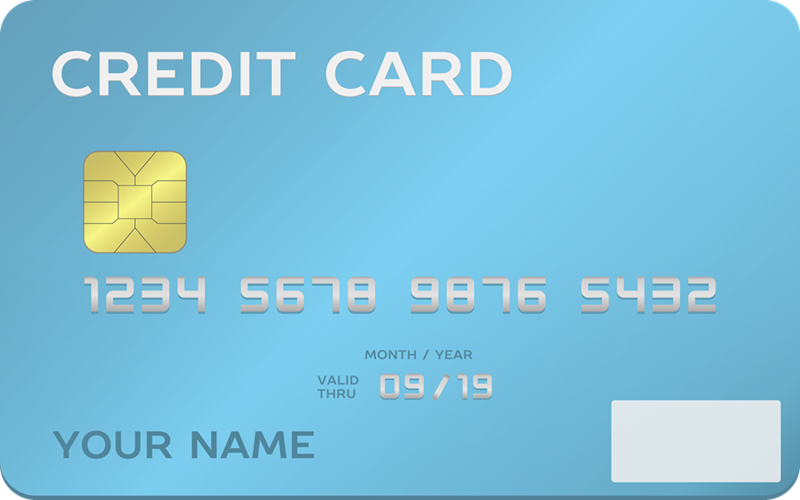In a world where access to financial services is often determined by credit scores, millions find themselves on the outside looking in. The unbanked population—those without traditional banking relationships—struggles daily with barriers that prevent them from achieving financial stability. Imagine trying to secure a loan or even rent an apartment without a credit history. For many, this scenario isn’t just hypothetical; it’s their reality.
The need for innovative solutions has never been more pressing. Traditional credit scoring methods leave countless individuals marginalized and underserved. But what if there was a way to bridge this gap? Enter alternative data—a revolutionary concept poised to change how we assess creditworthiness and open doors for those who have long been excluded from the financial system.
With alternative credit scoring, we can finally challenge the status quo and create opportunities for everyone, regardless of their banking background. Let’s explore how this transformative approach is reshaping access to finance for the unbanked population and paving the way toward greater economic equality.
Traditional Credit Scoring Methods and their Limitations for the Unbanked
Traditional credit scoring methods rely heavily on established financial histories. This approach often excludes a significant portion of the population, particularly those who are unbanked.
These individuals may not have access to conventional banking services, leading to a lack of credit history. Without this record, they find themselves locked out of essential financial products like loans and mortgages.
Additionally, traditional systems can perpetuate existing biases. Factors such as income level or geographical location might unfairly impact scores. As a result, deserving candidates can be overlooked simply due to circumstances beyond their control.
Moreover, these scoring models often fail to account for non-financial behavior that reflects reliability and responsibility. They miss critical insights into an individual’s character and intent when it comes to repayment.
This creates a chasm between lenders and prospective borrowers in the unbanked community—one that needs bridging through innovative approaches.
What is Alternative Data?
Alternative data refers to non-traditional information used in evaluating creditworthiness. Unlike standard financial records, it encompasses a broader range of sources.
This type of data can include social media activity, utility payment histories, and even mobile phone usage patterns. It paints a more comprehensive picture of an individual’s financial behavior.
For the unbanked population, alternative data is particularly valuable. Many do not have traditional credit histories but still manage their finances responsibly.
By utilizing insights from various everyday activities, lenders can assess risk more accurately. This approach opens doors for those who might otherwise be excluded from conventional banking systems.
The integration of alternative data into credit scoring models revolutionizes how we view financial identity and responsibility. The potential for inclusivity grows significantly as this innovative method gains traction.
How is Alternative Data Used in Credit Scoring?
Alternative data is reshaping the landscape of credit scoring. This innovative approach goes beyond traditional metrics, tapping into a wider array of information to assess an individual’s creditworthiness.
Lenders now consider factors like utility payments, rent history, and even social media activity. These data points provide insights into a person’s financial behavior that conventional scores might overlook.
For instance, someone with no bank account may still demonstrate reliability through consistent bill payments. This creates a more comprehensive picture of their financial habits.
Moreover, alternative data can speed up the approval process. Automated algorithms analyze this information in real-time, reducing wait times for those seeking credit access.
By embracing these new sources of information, lenders can extend opportunities to millions who have been historically marginalized by traditional banking systems.
Examples of Alternative Data Sources
Alternative data sources are diverse and innovative, offering fresh insights into an individual’s creditworthiness.
Social media activity is one of the most intriguing examples. Platforms like Facebook or LinkedIn can reveal patterns in behavior, connections, and even employment status. This data helps lenders gauge reliability beyond traditional metrics.
Utility bills present another valuable source. Timely payments on electricity or water can demonstrate financial responsibility despite a lack of formal credit history.
Mobile phone usage also plays a crucial role. Data from mobile wallets and call records may indicate spending habits and stability, providing a fuller picture of someone’s financial behavior.
Additionally, rental payment histories offer insight into regular obligations met month after month. A consistent record here speaks volumes about commitment to fulfilling responsibilities.
These unconventional sources build trust where traditional methods fall short, giving the unbanked population new opportunities for credit access.
Benefits of Using Alternative Data for Credit Access for the Unbanked
Alternative data offers transformative benefits for the unbanked population. It opens doors to credit access that traditional methods often neglect.
By leveraging non-traditional information, lenders can create a more holistic view of an individual’s financial behavior. This includes payment history for rent, utilities, and even mobile phone bills. Such insights help assess creditworthiness beyond just income or employment status.
Another advantage is speed. Alternative data allows quicker decision-making processes. Instead of waiting weeks for paperwork and approvals, individuals can receive timely responses on their applications.
Moreover, it promotes inclusivity by providing opportunities to those historically overlooked by conventional systems. Young professionals or gig economy workers with irregular incomes find themselves in better positions to secure loans.
Ultimately, this approach fosters empowerment among the unbanked community, enabling them to build financial stability through responsible credit use.
Challenges and Criticisms of Alternative Data in Credit Scoring
Despite the potential benefits, alternative data in credit scoring faces significant challenges. Privacy concerns loom large. Many individuals worry about how their data is collected and used without consent.
There’s also a risk of bias. Algorithms trained on skewed datasets may inadvertently discriminate against certain groups. This could perpetuate existing inequalities rather than alleviate them.
Transparency is another issue. Consumers often have little insight into how credit decisions are made based on alternative data sources. This lack of clarity can erode trust in financial institutions.
Regulatory frameworks struggle to keep pace with innovation, leading to uncertainty for lenders and borrowers alike. Striking a balance between leveraging new technologies and protecting consumer rights remains a complex challenge that requires careful navigation as we move forward.
Future Outlook: Predictions on the Impact of Alternative Data on Financial Inclusion
The future of alternative credit scoring for the unbanked is promising. As technology continues to advance, access to diverse data sources will expand. This evolution could lead to more inclusive financial systems.
Emerging technologies like artificial intelligence and machine learning can refine how alternative data is analyzed. These innovations may enable lenders to assess risk more accurately without traditional metrics.
Moreover, regulatory bodies are beginning to recognize the importance of inclusivity in finance. They might introduce policies that support the use of alternative data while ensuring consumer protection.
As awareness grows about the financial challenges faced by unbanked individuals, institutions may shift their focus. There could be a greater emphasis on developing tailored solutions that cater specifically to this demographic’s needs.
Ultimately, as these changes unfold, we could witness an increase in financial literacy among previously excluded populations. Financial products designed with them in mind would likely emerge from this new understanding and outreach effort.
The Importance of Bridging the Gap with Alternative Credit Scoring.
The journey toward financial inclusion for the unbanked population is complex, yet essential. As we have explored, traditional credit scoring methods often leave many individuals without access to necessary financial services. This gap has significant implications for economic stability and growth.
Alternative credit scoring presents a promising solution. By leveraging alternative data sources, lenders can create a more holistic view of an individual’s creditworthiness. This approach not only opens doors for those who have been historically underserved but also empowers them with opportunities that were previously out of reach.
While there are challenges and criticisms surrounding the use of alternative data in credit scoring—such as privacy concerns and potential biases—the benefits cannot be ignored. Increased access to credit can lead to improved livelihoods and greater participation in the economy.
Success stories from various organizations illustrate how innovative approaches can change lives. With continued advancements in technology and a focus on ethical practices, the future looks bright for bridging this critical gap.
As society progresses, embracing alternative credit scoring models will be vital in ensuring that everyone has fair access to financial resources. The goal should always remain clear: fostering inclusivity so that all individuals have the opportunity to thrive financially.
Conclusion
The use of alternative data in credit assessment has proven to be a game-changer for the unbanked population. By incorporating non-traditional sources such as utility bills, mobile phone usage, and rent payments, financial institutions are now able to offer credit access to those who were previously deemed too risky and were denied traditional loans. This not only promotes financial inclusion but also gives opportunities for individuals to build their credit history and improve their overall financial standing. As technology continues to advance, the impact of alternative data on credit access will only continue to grow, bridging the gap between the banked and unbanked populations.



































